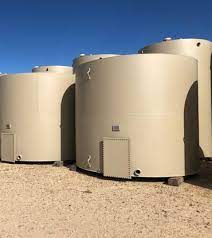
Early in this year I posed an article on the death of a young girl who was sitting on an oil tank battery when it exploded. New rules have now been promulgated to hopefully stop this from happening again.
After an oil field tank battery explosion killed a 14-year-old girl, Louisiana regulators have put new rules in place for the storage tanks and are launching a campaign to identify all of them statewide. Oil field tank batteries are storage sites for oil wells that aren’t connected to major pipelines. The large metal tanks can hold hundreds of thousands of gallons of crude oil, and can give off flammable fumes. But Zalee Gail Day-Smith and her friends were apparently unaware of those dangers, because they frequently hung out in and around one of the tanks near her mom’s house in the Ragley community, between DeRidder and Lake Charles. State Police investigators believe Day-Smith was sitting on the tank when it exploded on Feb. 28, killing her. She had dreamed of going to Harvard University and becoming a lawyer and judge, her father said. This week, the state Department of Natural Resources mentioned Day-Smith’s death when they announced new safety rules for the tank batteries. “We may never know exactly what happened on that site when Zalee died and accidents of that kind may be rare, but we have to do what we can to minimize the chances of it ever happening again by doing more to make people aware of potential hazards and keep them off these sites if they don’t belong there,” Commissioner of Conservation Richard Ieyoub said in a statement.
theadvocate.com
The rules seem to be common sense and one wonders why they were applied years ago.
The rules require operators to build fences at least four feet high around the sites, with a gate that is locked whenever they are unmanned. They also require all tank hatches to be securely sealed, except for those that are part of a pressure relief system. And they require signs noting the hazards the tanks pose. The rules apply to any sites that are within 500 feet of a home or highway, 1,000 feet of a church or school, or anywhere within the limits of a town, city or village. The Office of Conversation is also working to create a full list of all tank battery sites throughout the state, which has not been done before. Previously, the batteries were treated as “just another part of a well site,” so they weren’t individually identified, the DNR statement said. “In decades past, even people who weren’t in the oil and gas business almost always had relatives or friends who were, so there was a baseline understanding of what oilfield equipment was and what risks to avoid,” Ieyoub said. “That isn’t as much the case in this era, so we need to do more to make sure inherent hazards of working sites are understood.”
The need is more important as there was common knowledge that the tanks were a hazard.
The tank batteries were a known danger before Day-Smith’s death. A decade ago, the U.S. Chemical Safety and Hazard Investigation Board issued a report warning about a lack of warnings and fences, noting 26 deaths in explosions between 1983 and 2010.
As a child living on an Army post, I can remember playing in the armory, It was wrong and we knew it. That is what kids do.



